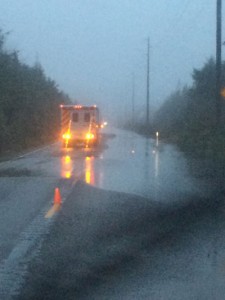By Matthew Brown, Associated Press
BILLINGS, Mont. (AP) – Leaders of American Indian tribes in the Rocky Mountains and Great Plains have joined an effort to retain federal protections for grizzly bears in and around Yellowstone National Park.
The U.S. Fish and Wildlife Service is expected to decide this year whether it will move to lift protections for the roughly 1,000 grizzlies that scientists say live in the Yellowstone region of Montana, Idaho and Wyoming.
The campaign to enlist tribal backing for continued protections is being coordinated in large part by wildlife advocates. Organizers say more than two dozen tribes have signed on with resolutions and other declarations of support.
Tribal leaders cited their ancestral connection to the Yellowstone area and the cultural importance of grizzly bears to their people.
“Any move to delist the sacred grizzly bear on this ancestral landscape must involve consultation with the affected Tribal Nations,” wrote Ivan Posey, a member of the Eastern Shoshone and chairman of the Montana Wyoming Tribal Leaders Council, in a letter last month.
Lifting protections and allowing state-sponsored hunting “not only represents a threat to tribal sovereignty, but also contravenes the American Indian Religious Freedom Act,” Posey said.
The council includes representatives from 11 tribes.
Tribal leaders from Idaho, South Dakota, North Dakota and Oklahoma have submitted similar letters through an advocacy group known as Guardians of Our Ancestors’ Legacy, or GOAL.
Federal grizzly recovery coordinator Chris Servheen said letters seeking comment were sent in April to four tribes in Wyoming and Idaho but none responded. The four tribes that received the Fish and Wildlife Service letters were identified by the agency’s tribal liaisons as having a direct interest in grizzlies in the Yellowstone region, Servheen said.
“We would welcome their input and ideas, and we asked for the input and ideas,” he said.
Grizzlies received federal protections in the Lower 48 in 1975 after getting wiped out across much of their range. The Yellowstone region is home to one of the largest remaining populations.
The region’s bears temporarily lost protections in 2007 before they were restored by a federal judge. No tribes raised concerns during that time, Servheen said.
Lifting protections would transfer jurisdiction over grizzlies to states that have said they would likely allow some trophy hunting of the animals. Wildlife managers have said hunt quotas would be kept small because of the size of the population and the bears’ low rate of reproduction.

















